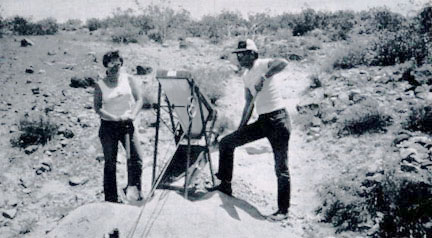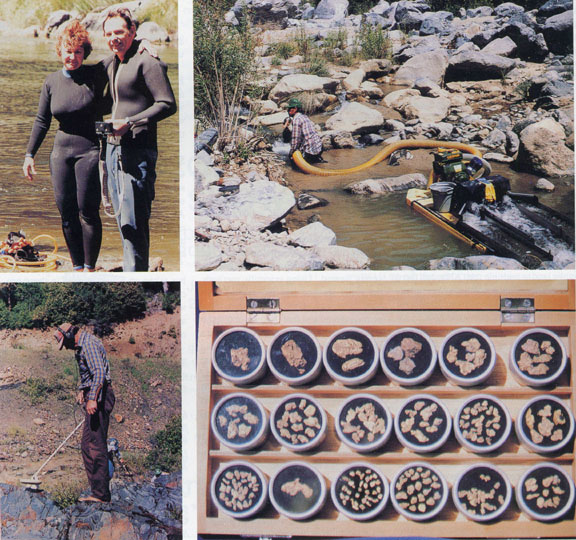By Jude Colleen Kendrick
“Ever have a prospecting trip where everything went wrong?”
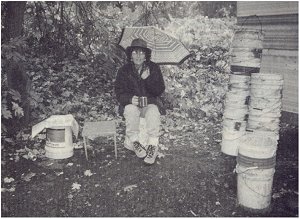 Three months of planning, over a thousand miles of traveling, anticipation of gold pans shining with stringers of gold — then, almost everything went wrong!
Three months of planning, over a thousand miles of traveling, anticipation of gold pans shining with stringers of gold — then, almost everything went wrong!
It had been quite a while since I had taken a 12-day prospecting trip. I am tied to work obligations, as most of us are; and it is rare to have an opportunity to escape and do what I love for that length of time.
The plans began several months ago, when my prospecting partner, Gail Butler, and I were invited on a nugget-shooting hunt. Two friends of Gail’s, Marc Davis and W.R.C. Shedenheim, of Rock and Gem Magazine, had researched the old dredge tailings near Sacramento, and had asked us to join them this past October for a group hunt.
Gail and I decided we would “dig our way” up from Los Angeles and do a little bit of high-banking on the Stanislaus River, near Columbia, before heading up to Sacramento.
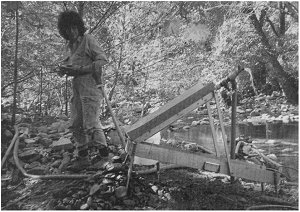 The trip to Columbia was uneventful; but it was a very, very long drive. We finally arrived at the road which would lead us down to the river. As we descended, we saw ahead of us large billowing clouds of smoke coming over the mountain ridge. We could not believe that we had driven all this way and the mountain was on fire! This was not a canyon that you would want to get trapped in. As we watched the smoke increasing and nervously viewed a bomber plane flying overhead, a truck was approaching us, coming out of the canyon. We waved the man down and asked if he knew what was happening. He replied that it was just a controlled burn — we were extremely relieved. That relief quickly disappeared when the man left us with the statement “But those burns don’t always remain controlled.” What a comforting thought! We decided to go down anyway, finally finding a clearing near the river which looked great for camping and high-banking.
The trip to Columbia was uneventful; but it was a very, very long drive. We finally arrived at the road which would lead us down to the river. As we descended, we saw ahead of us large billowing clouds of smoke coming over the mountain ridge. We could not believe that we had driven all this way and the mountain was on fire! This was not a canyon that you would want to get trapped in. As we watched the smoke increasing and nervously viewed a bomber plane flying overhead, a truck was approaching us, coming out of the canyon. We waved the man down and asked if he knew what was happening. He replied that it was just a controlled burn — we were extremely relieved. That relief quickly disappeared when the man left us with the statement “But those burns don’t always remain controlled.” What a comforting thought! We decided to go down anyway, finally finding a clearing near the river which looked great for camping and high-banking.
Opening the back window of my truck shell was like releasing the top of a Jack-in-the-Box. I had decided not to take my tent trailer, because we had planned, on the return trip home, to do a little gold prospecting in an area above Death Valley. The roads there are not very kind to tent trailers. So, my truck was packed with every camping item you could imagine, along with high-bankers, sluices, metal detectors and all our personal belongings. Once I removed the much-needed bungee cord, out popped everything.
The first sign of bad luck hit us just after setting up camp. With the truck now empty, I discovered that I had forgotten most of my clothes. Ten minutes later, when I attempted to take a picture of camp, I found that my camera was broken. I joked with Gail about “What else could go wrong?” The answer came the following morning. We woke up to an pretty substantial rain storm. Gail’s hat was floating around in a pool of water that was on the floor of the tent. I had owned this tent for years; but it had never been rained on before. The ceiling wasn’t leaking, but the side-seams certainly were! Everything on the floor was soaked. Everything outside — the stove, the lanterns, and supplies — was soaked. This was not fun!
Within an hour or so, the rain finally let up enough for us to head for the river and start high-banking. After setting up all the equipment, I proceeded to crank-up the engine and guess what? It would not start! The engine had not gotten wet and it had never, ever acted like this before. After about 45 minutes, I finally got it to turnover.
The rain continued on and off for four days. I don’t recall that we were ever reallydry. We found one nice nugget, but it was very difficult trying to shovel mud into the high-banker.
About two days into this wonderful trip, we met two other prospectors who were camped downstream from us. Larry and “‘Half-Bucket,” as he called himself (because he only moved a half bucket of dirt a day), kind of felt sorry for us and thought it would be nice to cook us a dinner. They had RV’s, so they did not have to cook under a tarp.
Gail and I are not in the habit of accepting invitations from strangers, but these gentlemen were gentlemen, and we felt it was all right to go for a dry meal. At dinner, Larry brought out some Irish Crème that he had made himself. Neither Gail nor I are really drinkers, but it sounded like a great idea on this cold and rainy night.
After drinking about a quarter-Dixie cup full, I realized something was very strange. I could not feel my legs! I was told later that I was walking and stepping as if I was trying to walk up steps — but there were no steps! I finally asked Larry how he made his Irish Crème, and he confessed that in place of whiskey, he used 190-proof moonshine that was being made by some hardrock miner down the road. I am not sure how Gail felt, but I felt as though I was under anesthesia for the next two days.
On the fifth day, our day of departure, we woke to rain again.
Have you ever tried to pack-up a six-person tent that is soaking wet? Not easy! We barely had enough dry clothes to wear for the trip up to Sacramento. I could not wait to get to the hotel. When: we arrived there, we immediately found a Laundromat to wash all of our “mud clothes.” Can you imagine looking so bad that people in a Laundromat were staring at you? And these people were campers as well!
After a night of rest in dry beds, Gail and I connected with Marc and W.R.C. for our first day of nugget shooting. Rain was again threatening, but we all figured we would go for it anyway. Marc had gone to great lengths to secure permission to detect the old bucket-line dredge tailings that were located on private property. But at the first site, after gearing up and getting started, we were asked to leave. Apparently, several owners were involved, and the two owners who had granted permission to Marc had not told the third owner of their actions.
On the second day, after arriving at an area that we could hunt, we found an incredible valley that went on for miles, covered totally with old bucket-line dredge tailings. Again, the weather was threatening; but the landscape was so beautiful, you could almost forget about the impending storm.
Most of the tailing piles were over 10-to 15-feet high and covered with various sizes of river rock. About mid-day, as I attempted to climb one of these, I lost my balance and fell forward, head first, and then down on my stomach. Down the tailing pile, I slid as if my body were a sled on a snow hill. When I finally hit bottom, as I lay there, I was looking around to see if any of the group had seen me exhibit this graceful attempt at metal detecting. I was a bit banged up, but nothing serious. We found no gold; but it certainly was not because we didn’t try.
On the last day, heading back to the hotel, it started to hail and I wondered — when were the locusts coming?
Gail and I decided on that last evening that we had better go back to Los Angeles for a couple of days, dry everything out, and then proceed on to the area above Death Valley. We re-mapped so that we could return on Highway 395, and I could drop Gail off in Upland.
Well — the curse was obviously not through with us! Just about eight miles out of the town of Mojave, we smelled something burning in the truck, and snap went the fan belt! There we were on a stretch of Highway 14 right between two high mountain peaks.
I mention that because, of course, my CB radio was worthless to me in the canyon. It was very windy and cold, and I was out making hand signals to the drivers of the big rigs to call for help. I am not sure how this looked; because some of them looked at me like I was crazy. I was crazy!
Finally, we saw a California Highway Patrol (CHP) car on the opposite side of the highway. He looked over at us, got off the freeway, came back on our side and drove right past us! We could hardly believe our eyes.
To make a long story short, a Deputy Sheriff finally stopped and called for a tow truck. He was kind enough to stay with us until the truck arrived. During the wait, CHP and other Sheriffs then stopped to see what was going on. It looked like a crime scene!
After a couple of hours in Mojave, and an unwanted repair bill, we finally headed back home. I enjoyed every minute of my two-day “drying out” time at home. The second leg of the trip would only be an overnighter, so at least I didn’t have to pack very much.
I picked Gail up and we were off to an area in the Clark Mountains above Death Valley. We had planned to go to an old abandoned mining camp that Gail had found and written about a few years earlier. This camp had been deserted for over 40 years; but when we got there, the old buildings had been replaced with new ones and the old mining equipment replaced with a new backhoe and trucks. There were “NO TRESPASSING” signs everywhere. We had just driven six hours to do some metal detecting at this place!.
We do not give up very easily, so down the road we went to investigate some other old mining areas. Darkness came quickly, and we had to find a place to camp for the night. After settling behind a large knoll, we emptied the truck only to find that the lantern had no mantles and the flashlight batteries were dead! We had not brought spares of either item. Can you believe that?
We left early the next morning for home. This was the last leg of our 12-day trip; and although we had our share of bad luck, we did have some good times, as well. That was, until while driving home on Highway 395, just five miles out of Kramer Junction, the clutch on my truck decided that it would quit working. This was just to show us that we were not yet done with our “trip from Hell!”
So remember O’Reilly’s Law, Murphy was definitely an optimist!
But don’t ever give up! My next trip, and all of our trips, will always bring a moment of joy that only we prospectors and treasure hunters understand. Good Luck!!


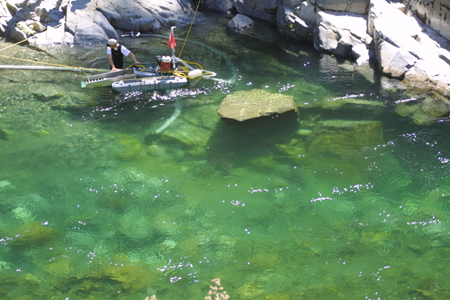 Things were going good and looking better. Yesterday had been a long day, but not as long as I was able to work; about three and a half tanks of gasoline or seven hours. Today, as planned after the gold weigh-up last night, I was at the river early, determined to put in at least a four-tank day . . . and pull my first half-ounce of gold in a day!
Things were going good and looking better. Yesterday had been a long day, but not as long as I was able to work; about three and a half tanks of gasoline or seven hours. Today, as planned after the gold weigh-up last night, I was at the river early, determined to put in at least a four-tank day . . . and pull my first half-ounce of gold in a day!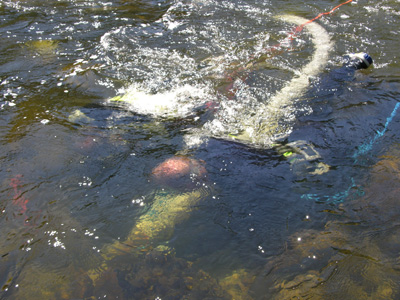
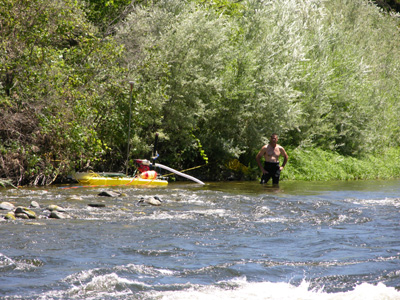
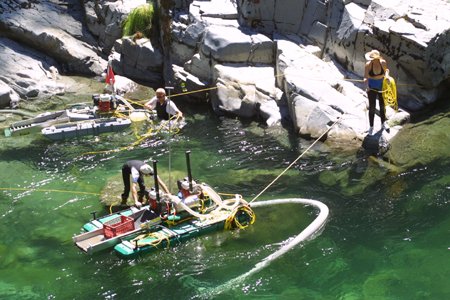 A partner and I were
A partner and I were 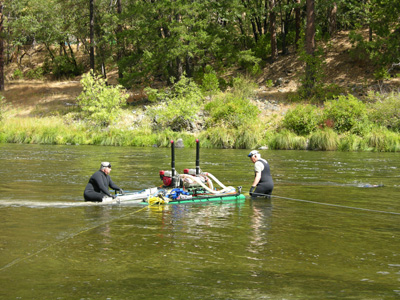
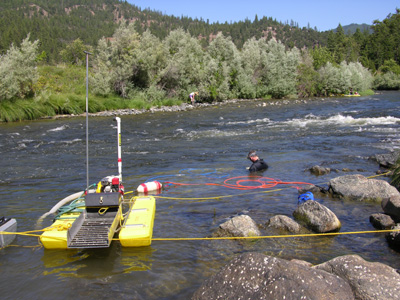
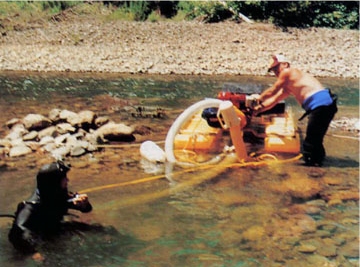 My BH (Big Hubby) and I became interested in
My BH (Big Hubby) and I became interested in 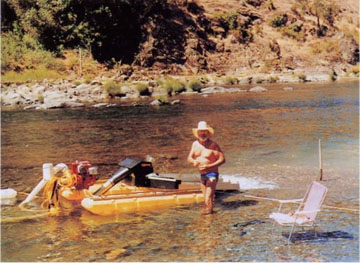
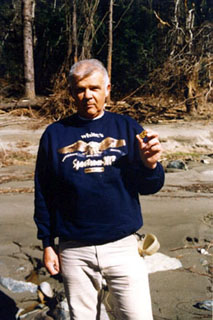 During my recent visit to
During my recent visit to 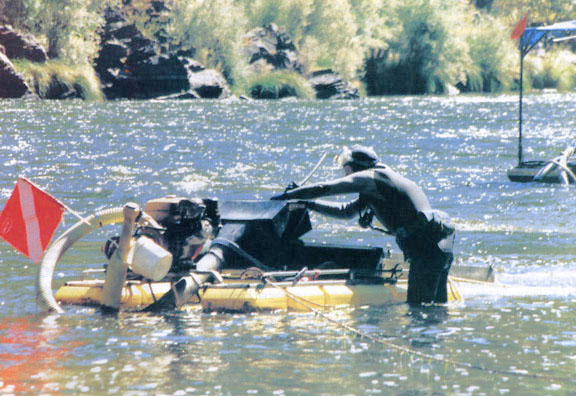
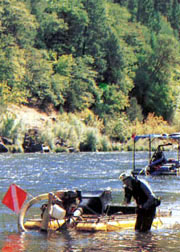 John remained unmarried until he was 40. While on a trip to Mexico, he met a lovely young woman and began courting her in the traditional way, with a “duenna,” or chaperone, along whenever they met. After returning home, they carried on a correspondence, and he finally proposed by mail. After marrying her in Mexico, he brought her home to Vancouver, where he had a home built for them, and they raised two daughters.
John remained unmarried until he was 40. While on a trip to Mexico, he met a lovely young woman and began courting her in the traditional way, with a “duenna,” or chaperone, along whenever they met. After returning home, they carried on a correspondence, and he finally proposed by mail. After marrying her in Mexico, he brought her home to Vancouver, where he had a home built for them, and they raised two daughters.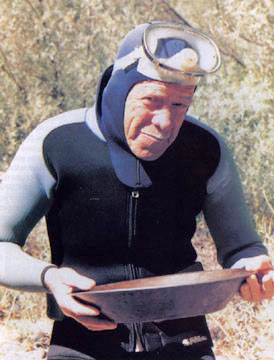 I stress that he dredges alone, because John Coombs has celebrated his 70th birthday, and most people that age who do dredge don’t dredge by themselves. John has won the respect of all his fellow miners along the
I stress that he dredges alone, because John Coombs has celebrated his 70th birthday, and most people that age who do dredge don’t dredge by themselves. John has won the respect of all his fellow miners along the 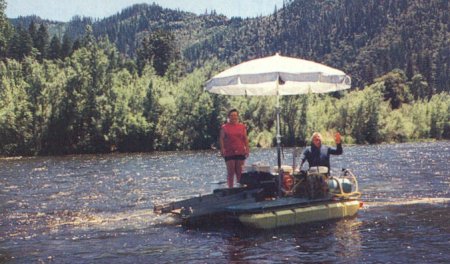
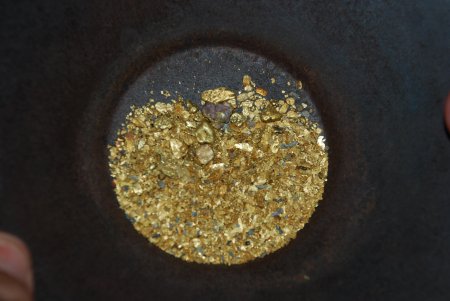 They have concentrated most of their efforts into areas where other people do not want to work—mostly in very fast water, and have done quite well. When they quit dredging, they had accumulated between seven and eight ounces of gold by the end of August, this past season.
They have concentrated most of their efforts into areas where other people do not want to work—mostly in very fast water, and have done quite well. When they quit dredging, they had accumulated between seven and eight ounces of gold by the end of August, this past season.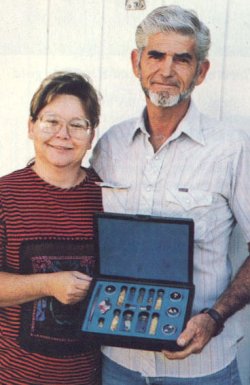
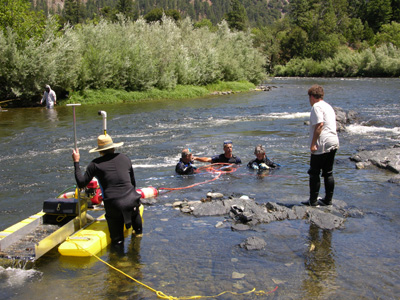 Does your husband have a new hobby? Did he one-day show up with a gold pan, vial, snifter bottle, tweezers and screen?
Does your husband have a new hobby? Did he one-day show up with a gold pan, vial, snifter bottle, tweezers and screen?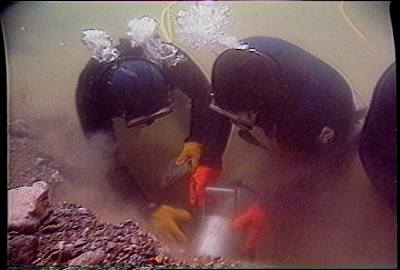 Interestingly enough, you discover your neighbor has this same hobby. You’ve lived next door for a number of years, and you think you would have known. Paul’s excitement rekindled our neighbor’s gold fever and he remembered a bucket of
Interestingly enough, you discover your neighbor has this same hobby. You’ve lived next door for a number of years, and you think you would have known. Paul’s excitement rekindled our neighbor’s gold fever and he remembered a bucket of 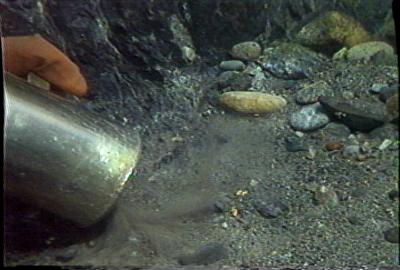 That is how it all started for us. The next thing I knew, my brother-in-law, Kevin, had introduced Paul to a few more
That is how it all started for us. The next thing I knew, my brother-in-law, Kevin, had introduced Paul to a few more 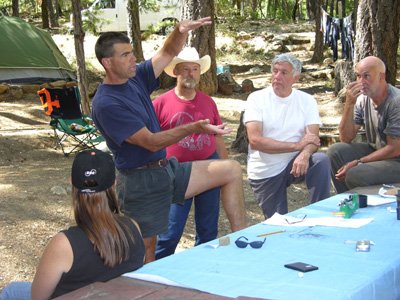 Have you ever been to a
Have you ever been to a 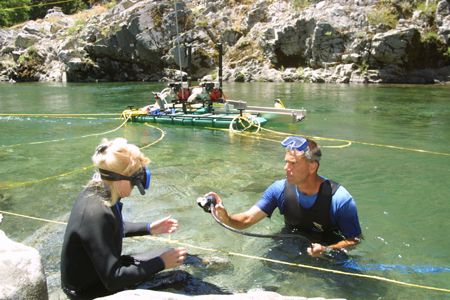 Day two is a demonstration with a visual of a mock river showing how and where gold deposits. Then we caravanned for a tour of different spots on the river where other people had been successful in finding gold. Dave tied together the theory, with the simulation of the actual field conditions.
Day two is a demonstration with a visual of a mock river showing how and where gold deposits. Then we caravanned for a tour of different spots on the river where other people had been successful in finding gold. Dave tied together the theory, with the simulation of the actual field conditions.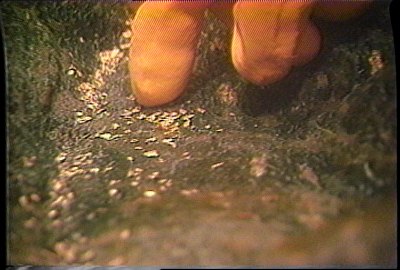 Once you actually see the gold being recovered out of a natural
Once you actually see the gold being recovered out of a natural 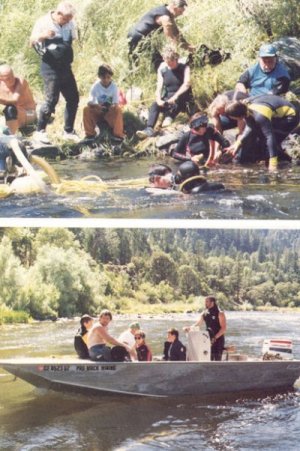 Now I think I’d happily trip over a dredge in our garage that we could take to Happy Camp to put in the Klamath River every summer.
Now I think I’d happily trip over a dredge in our garage that we could take to Happy Camp to put in the Klamath River every summer.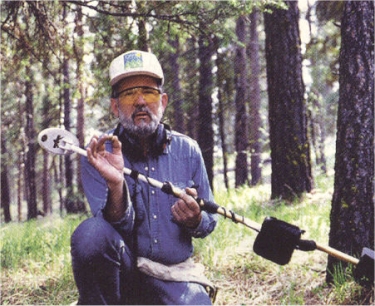 Searching for tiny, elusive
Searching for tiny, elusive 